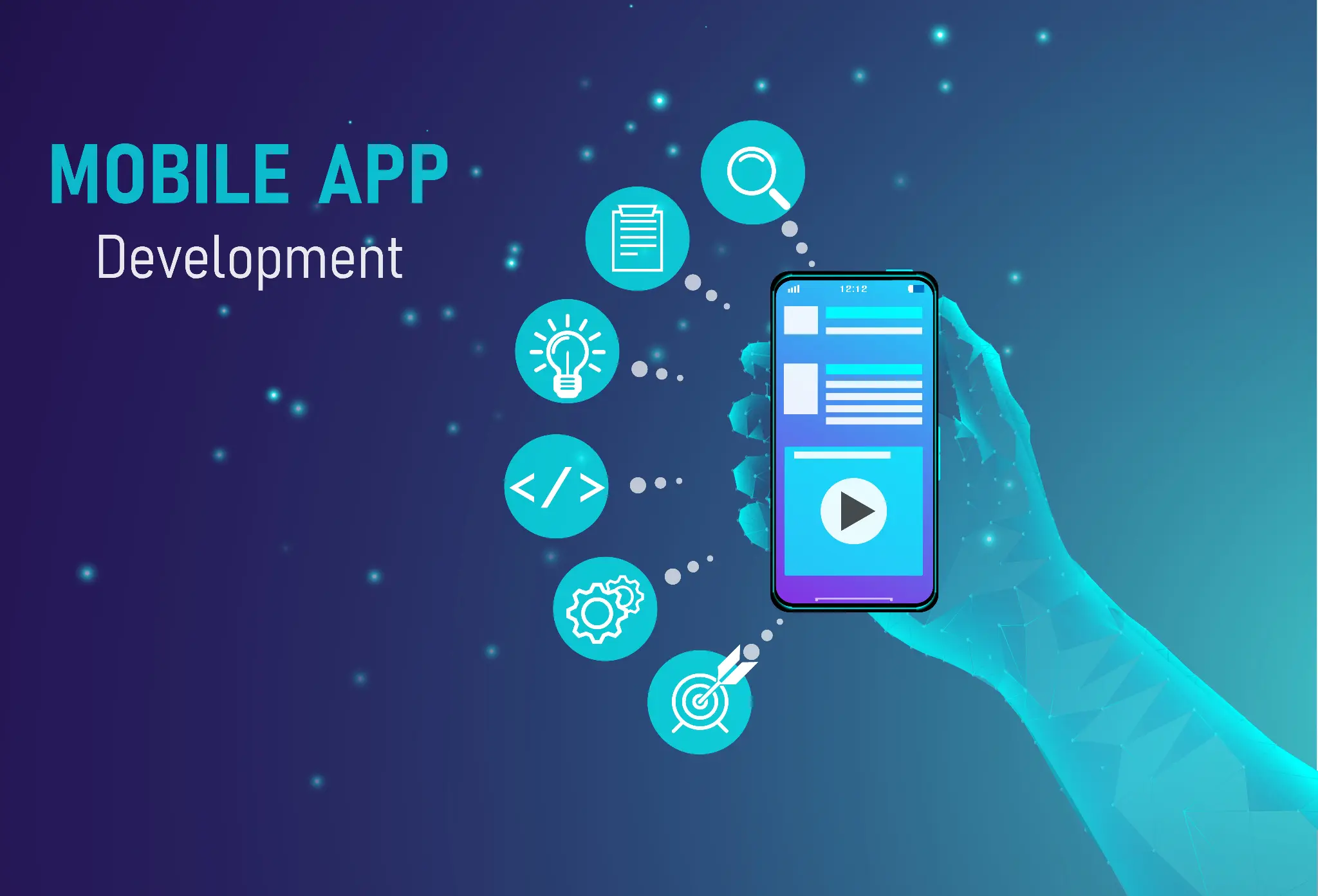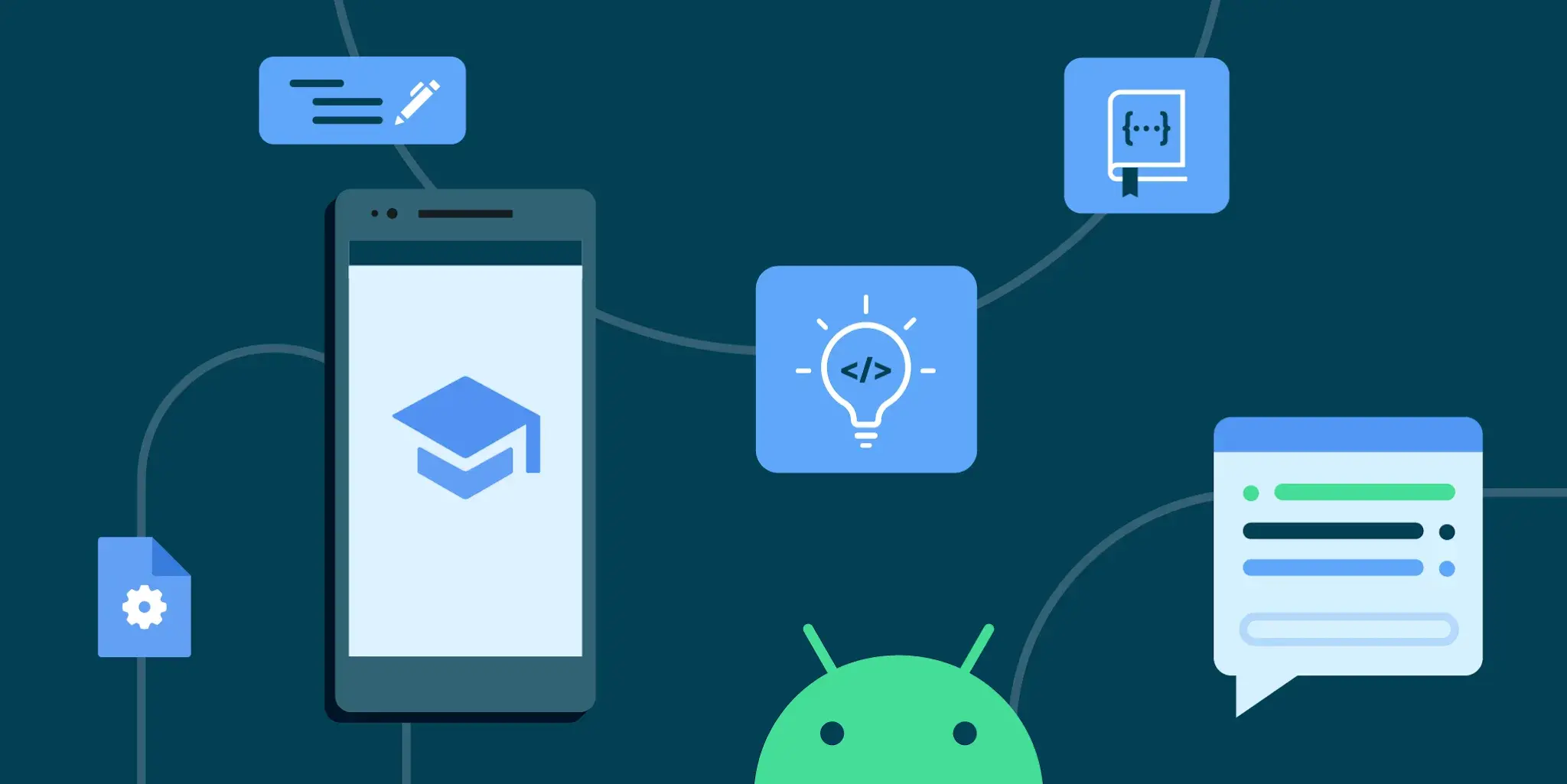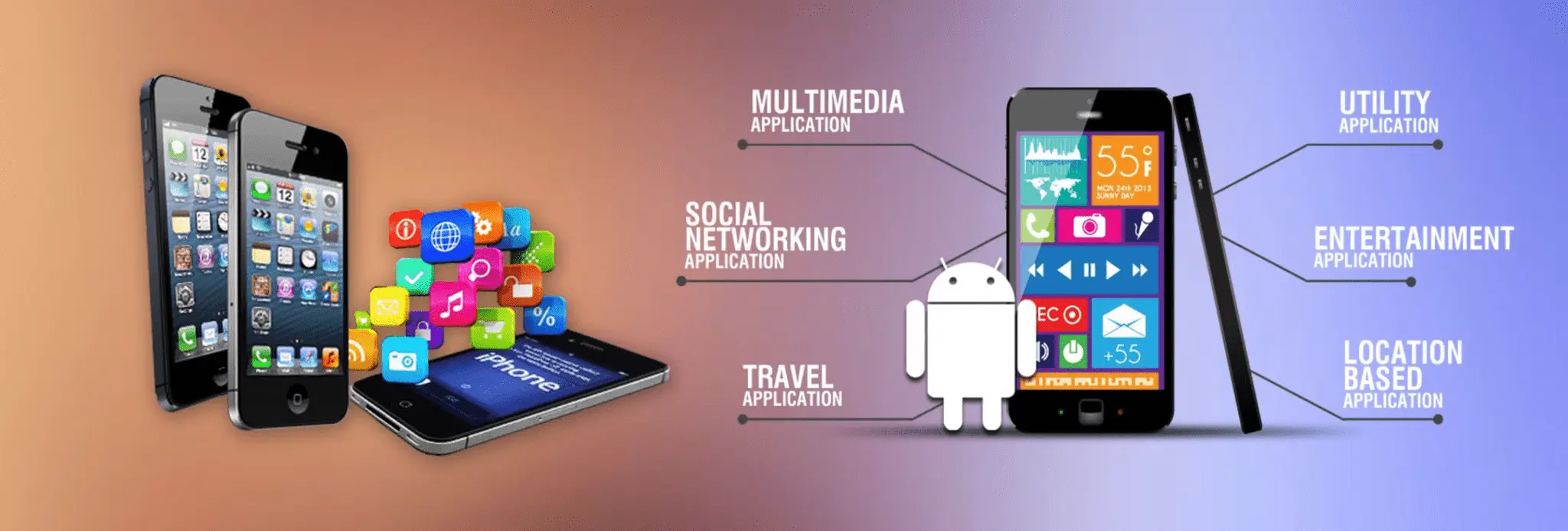Top Trends in App Development for 2024
App development is constantly evolving, driven by technological advancements and changing user expectations. Blue IT Systems brings a wealth of experience in developing apps across various platforms, including iOS, Android, and web. Their team of experts ensures that your app is optimized for performance and user experience on every device, allowing you to reach a broader audience. Every business is unique, and so are its app requirements. Blue IT Systems takes the time to understand your specific needs and goals, creating customized solutions that align with your business objectives.

As we move into 2024, it's essential to stay informed about the latest trends that are shaping the industry. From AI integration to AR/VR applications, these trends are not just buzzwords—they represent the future of how we interact with technology.
AI Integration in App Development
- Personalized User Experiences
- AI-Powered Analytics
- Immersive Gaming Experiences
- Augmented Reality in Retail
- Virtual Reality in Education
Artificial intelligence (AI) is revolutionizing the way we experience apps. One of the most significant impacts is in creating personalized user experiences. AI algorithms can analyze user behavior and preferences to offer tailored content, recommendations, and even UI adjustments. This means that every interaction with an app can feel unique to the individual user, leading to higher engagement and satisfaction.
For example, apps like Spotify and Netflix use AI to suggest music and shows based on your listening and viewing history. This kind of personalization is becoming the norm, and users now expect it as part of their app experience.
Beyond personalization, AI is also transforming app analytics. AI-powered tools can sift through massive amounts of data to provide insights that would be impossible to glean manually. This includes predictive analytics, which can forecast user behavior and trends, allowing developers to make informed decisions about updates, features, and marketing strategies.
Apps that leverage AI for analytics are better equipped to meet user needs and stay ahead of the competition. It's no longer enough to track basic metrics—AI is pushing the boundaries of what's possible in data analysis.
The Rise of AR/VR Applications
Augmented reality (AR) and virtual reality (VR) are taking the gaming industry by storm. These technologies offer immersive experiences that traditional games can't match. Whether it's battling dragons in a VR world or overlaying digital creatures onto the real world with AR, the possibilities are endless.
Games like Pokémon Go and Beat Saber have set the stage for AR and VR in gaming, but this is just the beginning. In 2024, we can expect even more innovative titles that push the boundaries of what gaming can be.
AR isn't just for gaming—it's also transforming the retail industry. Retail apps are increasingly using AR to enhance the shopping experience. This technology allows users to visualize products in their own space before making a purchase, whether it's trying on clothes virtually or seeing how a new couch would look in their living room.
Brands like IKEA and Sephora have successfully integrated AR into their apps, offering users a more interactive and informed shopping experience. This trend is set to grow, with more retailers exploring the potential of AR.
Education is another field where VR is making a significant impact. VR offers immersive learning experiences that traditional methods can't replicate. Students can explore historical sites, conduct virtual science experiments, and even practice surgical procedures in a risk-free environment.
Educational apps that incorporate VR are providing more engaging and effective learning tools. As VR technology becomes more accessible, we can expect to see a surge in its use within educational settings.
The Growth of Cross-Platform Development
- Advantages of Cross-Platform Apps
- Cross-Platform vs. Native Development
Cross-platform development is gaining traction as a cost-effective and time-saving approach to app development. By using frameworks like Flutter and React Native, developers can create apps that run on multiple platforms (iOS, Android, etc.) with a single codebase. This not only reduces development time but also ensures consistency across different devices.
For businesses, this means faster time-to-market and lower development costs. It's a win-win situation that is likely to become the standard approach for many app projects.
However, cross-platform development isn't without its challenges. While it's more efficient, it may not always deliver the same level of performance as native development. Native apps are specifically designed for a particular platform, which can result in better optimization and access to platform-specific features.
The decision between cross-platform and native development depends on the specific needs of the app and its users. Developers need to weigh the pros and cons to determine the best approach for their project.

Progressive Web Apps (PWAs)
Progressive Web Apps (PWAs) are a hybrid between web and mobile apps. They offer the best of both worlds—accessible via a web browser but with the functionality of a native app. PWAs are designed to be fast, reliable, and engaging, making them an attractive option for businesses looking to reach a broad audience.
One of the key differences between PWAs and traditional apps is that PWAs don't require installation from an app store. Users can access them directly from their browser, which lowers the barrier to entry and increases user engagement.
For businesses, PWAs offer several advantages. They are typically less expensive to develop and maintain than native apps, and they provide a seamless user experience across devices. PWAs also tend to have better loading speeds and offline capabilities, which can improve user retention.
Companies like Twitter and Starbucks have successfully implemented PWAs, and their experiences demonstrate the potential of this technology to drive user engagement and business growth.
Numerous companies have embraced PWAs to great effect. For instance, Twitter's PWA, Twitter Lite, offers a faster, more data-efficient experience for users in areas with slow or unreliable internet connections. Similarly, Starbucks' PWA has increased customer interaction and streamlined the ordering process.
These examples highlight how PWAs can be a game-changer for businesses, providing an excellent user experience while reducing development and maintenance costs.
5G Technology and Its Impact
The rollout of 5G technology is set to revolutionize app development in 2024. With faster speeds and lower latency, 5G enables apps to perform better and offer more advanced features. This includes everything from high-definition video streaming to real-time multiplayer gaming.
Apps that leverage 5G technology can offer experiences that were previously impossible. As 5G becomes more widespread, developers will have new opportunities to create cutting-edge apps that take full advantage of this technology.
5G is also a game-changer for the Internet of Things (IoT). With its enhanced connectivity, 5G can support a vast number of connected devices, from smart home appliances to industrial sensors. This opens up new possibilities for IoT app development, allowing for more complex and responsive systems.
In 2024, we can expect to see a surge in IoT apps that leverage 5G, creating more integrated and intelligent environments for both consumers and businesses.
Emphasis on App Security and Privacy
As apps become more sophisticated, so do the threats against them. Cybersecurity is a growing concern in app development, with cyberattacks becoming more frequent and more sophisticated. Protecting user data is more critical than ever, and developers need to prioritize security in every aspect of app design and development.
Common vulnerabilities include weak encryption, insecure data storage, and insufficient authentication methods. Addressing these issues is essential to prevent breaches and maintain user trust.
Implementing Robust Security Measures
To safeguard apps against cyber threats, developers must implement robust security measures. This includes using strong encryption methods, employing multi-factor authentication, and regularly updating apps to patch vulnerabilities. Additionally, conducting thorough security testing throughout the development process can help identify and fix potential issues before they become problems.
By prioritizing security, developers can protect both their apps and their users, ensuring a safer and more secure digital environment.
User Privacy and Data Protection
In addition to security, privacy is a major concern for app users. With regulations like the GDPR (General Data Protection Regulation) and CCPA (California Consumer Privacy Act), developers must ensure that their apps comply with privacy laws and protect user data.
Building trust through transparent data practices is key to maintaining a loyal user base. This means clearly communicating how user data is collected, stored, and used, and giving users control over their personal information.

The Impact of Voice-Activated Interfaces
Voice-activated interfaces are becoming increasingly popular, thanks to the rise of voice assistants like Siri, Alexa, and Google Assistant. These technologies have changed the way users interact with their devices, making voice commands a common feature in many apps.
Voice search is also on the rise, with more users relying on voice commands to find information, make purchases, and control smart devices. This trend is driving the development of apps that are optimized for voice interaction.
Designing apps for voice interaction presents unique challenges and opportunities. Developers must consider factors like speech recognition accuracy, natural language processing, and the overall user experience. Creating intuitive and responsive voice interfaces requires a deep understanding of how users communicate and interact with technology.
As voice-activated devices become more widespread, apps that effectively integrate voice interaction will have a significant advantage in the market.
The Evolution of App Monetization Strategies
Monetization strategies are evolving as developers seek new ways to generate revenue from their apps. In-app purchases and subscription models are becoming increasingly popular, offering a steady stream of income while providing users with valuable content and features.
Balancing monetization with user experience is crucial—too many ads or paywalls can drive users away, while a well-designed monetization strategy can enhance the overall app experience.
Ad-supported models remain a common monetization strategy, particularly for free apps. However, the key to success is ensuring that ads do not disrupt the user experience. Non-intrusive ad formats, such as native ads and rewarded video ads, can be effective ways to generate revenue without alienating users.
Developers need to carefully consider the type and placement of ads to ensure they complement, rather than detract from, the app experience.
Looking ahead, we can expect to see new and innovative monetization strategies emerge. This might include microtransactions, freemium models, and even blockchain-based payments. Developers who stay ahead of these trends will be better positioned to capitalize on the growing app market.
The Role of Blockchain in App Development
Blockchain technology is making its mark on app development, particularly with the rise of decentralized apps (DApps). These apps operate on a blockchain network, offering enhanced security, transparency, and user control. Unlike traditional apps, DApps are not controlled by a single entity, making them resistant to censorship and downtime.
Examples of successful DApps include Ethereum-based platforms like Uniswap and CryptoKitties. As blockchain technology continues to evolve, we can expect to see more innovative DApps enter the market.
Blockchain's decentralized nature also makes it an ideal solution for enhancing app security. By using blockchain to secure user data, developers can protect against unauthorized access and ensure data integrity. This is particularly important for apps that handle sensitive information, such as financial or medical data.
As security concerns continue to grow, blockchain is likely to play an increasingly important role in app development.
The Shift Towards No-Code/Low-Code Development
No-code and low-code development platforms are democratizing app development by allowing users to create apps without extensive coding knowledge. These platforms offer drag-and-drop interfaces and pre-built templates, making it easier for non-developers to build functional and attractive apps.
This trend is opening up new opportunities for businesses and individuals who want to create apps quickly and efficiently, without the need for a dedicated development team.
There are several no-code and low-code platforms available, each with its own strengths and capabilities. Some of the most popular platforms include Bubble, Adalo, and OutSystems. These platforms have been used to create a wide range of apps, from simple prototypes to fully functional business solutions.
Success stories from these platforms demonstrate the potential of no-code/low-code development to transform the app industry.

App Development for Wearable Devices
Wearable devices, such as smartwatches and fitness trackers, are becoming increasingly popular, creating new opportunities for app developers. These devices offer unique features, such as health monitoring and real-time notifications, that require specialized app development.
Developers who can create apps tailored to the needs of wearable users will be well-positioned to capitalize on this growing market.
However, developing apps for wearable devices presents its own set of challenges. These include designing for smaller screens, ensuring compatibility across a variety of devices, and optimizing for limited battery life. Developers need to consider these factors to create successful and user-friendly wearable apps.
As the wearables market continues to expand, the demand for well-designed apps for these devices is expected to grow.
Conclusion
The app development landscape is rapidly evolving, with new trends and technologies emerging every year. In 2024, AI integration, AR/VR applications, cross-platform development, and 5G technology are set to play a major role in shaping the future of app development. As these trends continue to develop, developers must stay informed and adapt to the changing landscape to remain competitive.
By embracing these trends and incorporating them into their app development strategies, businesses can create innovative and successful apps that meet the needs of modern users. At Blue IT Systems, we understand that no two businesses are alike. That's why we pride ourselves on delivering tailored solutions that are meticulously crafted to align perfectly with your unique business needs. Our expert team takes the time to delve deep into the intricacies of your operations, gaining a comprehensive understanding of your objectives, challenges, and aspirations.
FAQs
The most significant trend in app development for 2024 is AI integration. AI is revolutionizing how apps operate, offering personalized user experiences and advanced analytics.
AI will continue to impact app development by enabling more personalized and intelligent user experiences. It will also drive innovation in areas like predictive analytics and automation.
Cross-platform development offers several benefits, including faster development times, cost savings, and consistency across multiple platforms. It allows developers to reach a broader audience without needing to build separate apps for each platform.
5G technology significantly enhances app performance by providing faster speeds, lower latency, and better connectivity. This enables more advanced features, such as real-time multiplayer gaming and seamless IoT integration.
App security is more important than ever due to the increasing prevalence of cyberattacks and the growing amount of sensitive data stored on mobile devices. Ensuring robust security measures protects users and builds trust in your app.